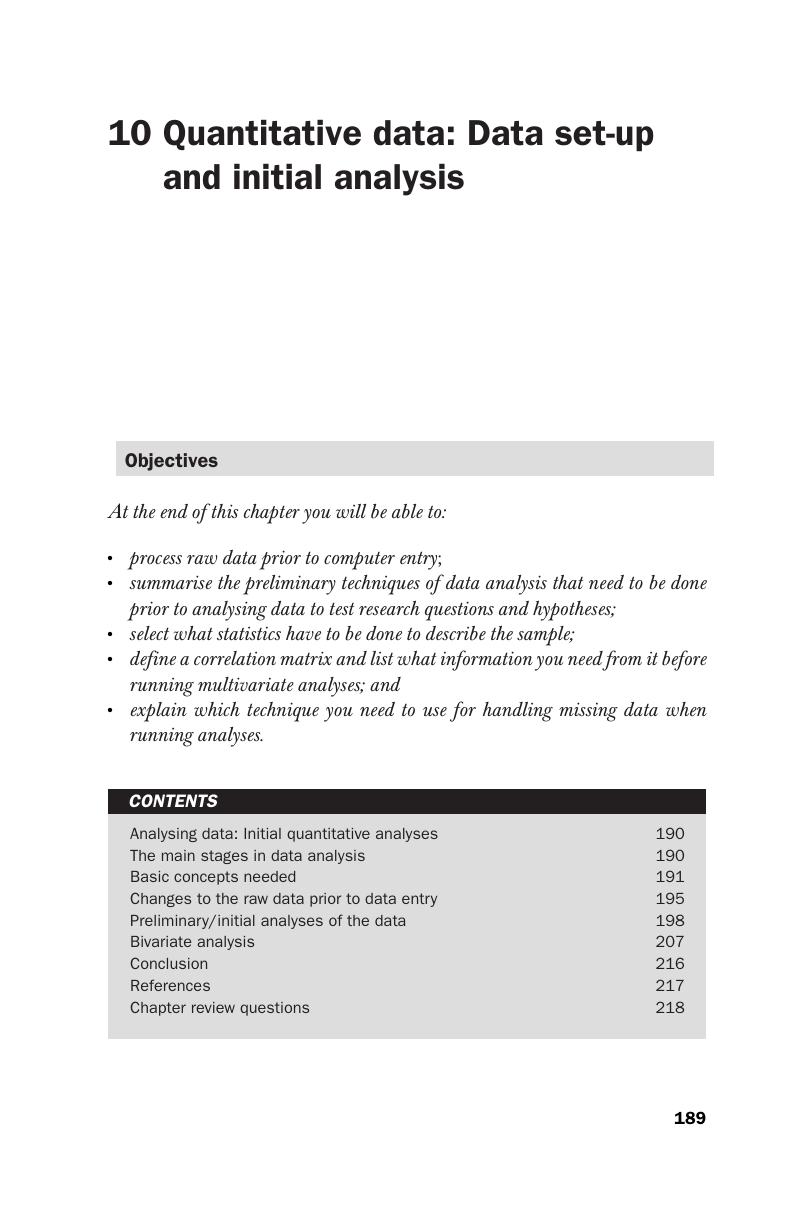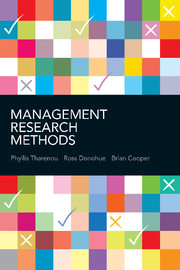Book contents
- Frontmatter
- Contents
- Preface
- Part 1 Introduction
- Part 2 Research designs
- Part 3 Methods of data collection
- Part 4 Measurement
- Part 5 Methods of data analysis
- 10 Quantitative data: Data set-up and initial analysis
- 11 Quantitative data: Multivariate data analysis for answering research questions and hypothesis testing
- 12 Content analysis
- Part 6 Reporting research findings and ethical considerations
- Index
- References
10 - Quantitative data: Data set-up and initial analysis
Published online by Cambridge University Press: 05 June 2012
- Frontmatter
- Contents
- Preface
- Part 1 Introduction
- Part 2 Research designs
- Part 3 Methods of data collection
- Part 4 Measurement
- Part 5 Methods of data analysis
- 10 Quantitative data: Data set-up and initial analysis
- 11 Quantitative data: Multivariate data analysis for answering research questions and hypothesis testing
- 12 Content analysis
- Part 6 Reporting research findings and ethical considerations
- Index
- References
Summary

- Type
- Chapter
- Information
- Management Research Methods , pp. 189 - 219Publisher: Cambridge University PressPrint publication year: 2007

